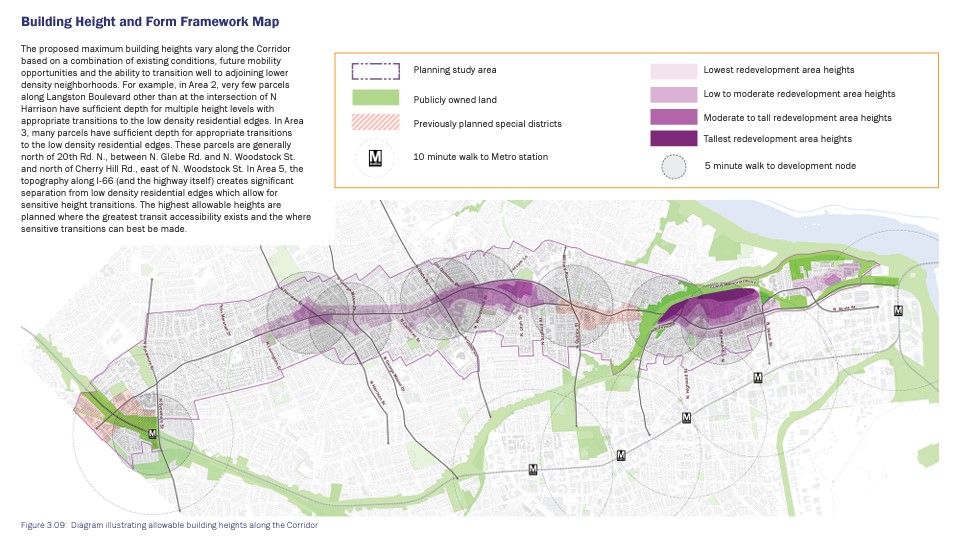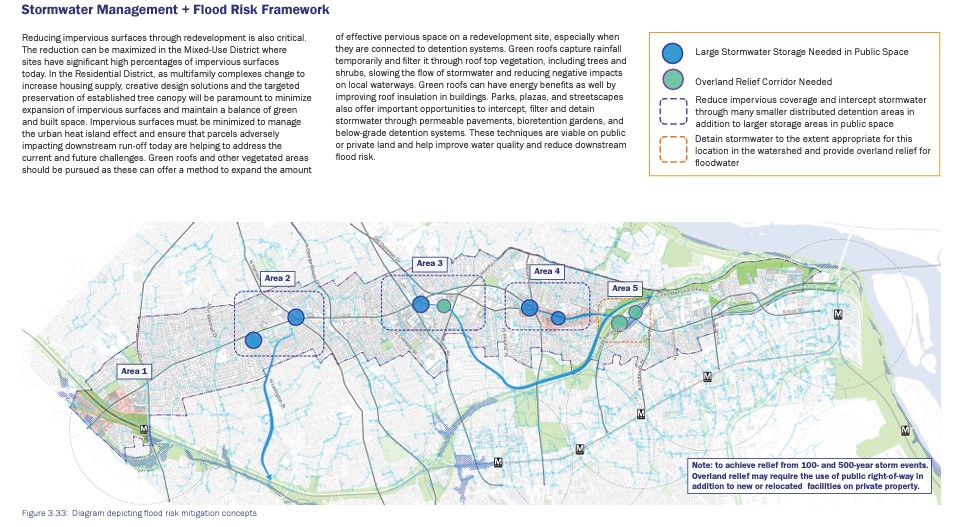Arlington County has finally unveiled the draft Langston Boulevard Area Plan after a lengthy review process. The Langston Boulevard Area Plan will be a comprehensive vision for the corridor’s future. This article will focus on three crucial aspects of the plan and what effect there may be for property owners along Langston Boulevard.
Preserving Cultural Resources
Being designated as a cultural resource can have several impacts on the property. If a property is designated as a cultural resource, there may be specific preservation requirements that property owners need to adhere to. These requirements could include limitations on alterations, renovations, or demolitions that may affect the historical or cultural significance of the property. Property owners may need to obtain permits or approvals from relevant authorities before making any changes to the designated cultural resource.
This designation may also come with land use restrictions. These restrictions could limit the types of activities or developments that can take place on the property. Property owners may need to comply with specific zoning regulations or historic preservation guidelines to ensure the preservation of the cultural resource.
While there may be additional responsibilities associated with the designation, property owners may also have access to financial incentives or assistance programs. These programs could provide grants, tax credits, or other forms of financial support to help property owners with the costs of preserving and maintaining cultural resources. The availability and eligibility criteria for these incentives may vary depending on local regulations and programs.
Addressing Stormwater Management
Property owners will also face additional impacts from changes in stormwater management outlined in the Langston Boulevard Area Plan. These changes may mean new development requirements, increased county collaboration, greater owner financial responsibility and potential incentives.
When undertaking redevelopment projects, property owners may be subject to new requirements and guidelines for stormwater management. The plan emphasizes the importance of reducing impervious surfaces and implementing design elements that contribute to downstream stormwater management. This may involve incorporating underground vaults, overland relief, or relocating existing storm sewers under buildings.
Property owners will likely need to collaborate with the county and other stakeholders to address stormwater challenges effectively. The plan highlights the need for collaboration between private landowners and the county to implement stormwater management strategies. This collaboration may involve discussions on stormwater infrastructure, maintenance responsibilities, and potential incentives, such as increased development density, for private stormwater management. Property owners would be responsible for implementing stormwater management measures that help alleviate downstream flooding or water quality issues. Specifically, to achieve relief from 100-year and 500-year storm events, overland relief may require the use of public right-of-way in addition to new or relocated facilities on private property, potentially at the owner’s expense.
The Langston Boulevard Area Plan suggests that incentives may be provided to encourage property owners to voluntarily participate in stormwater management practices. These incentives could include financial assistance, tax incentives, increased density or streamlined permitting processes. The specific incentives will depend on local policies and regulations, which may be developed in conjunction with the plan’s implementation. It is important to note that the specific impact on individual property owners may vary depending on the location, size, and nature of the property.
Activity Hubs
The plan identifies Activity Hubs as mixed-use areas connecting residents, workers, and visitors with diverse amenities. To support the Activity Hubs and promote walkability, mixed-use development is encouraged between Activity Hubs. Mixed-use development typically allows for a combination of residential, commercial, and other uses in the same area, often resulting in higher density compared to single-use areas. These hubs are envisioned as areas where higher-density development can take place.
The Langston Boulevard Area Plan proposes varying maximum building heights along the corridor, considering existing conditions, future mobility opportunities, and the potential for smooth transitions to adjacent lower density neighborhoods. Property owners along Langston Boulevard, particularly those at the intersection of N Harrison, may have limited depth for multiple height levels with appropriate transitions to low-density residential areas. However, in other areas, such as north of 20th Rd. N. between N. Glebe Rd. and N. Woodstock St., and north of Cherry Hill Rd. east of N. Woodstock St., many parcels have sufficient depth for suitable transitions to low-density residential edges. The topography along I-66 provides significant separation from low-density residential areas, which could allow property owners to have more conducive height transitions. The highest allowable heights are planned in areas with the greatest transit accessibility, where sensitive transitions can be best achieved.
Proposed amendments to the General Land Use Plan (GLUP) and Zoning Ordinance, particularly focusing on Activity Hubs, aim to accommodate increased density and promote economic vitality.
Conclusion
As Arlington County moves forward with the Langston Boulevard Area Plan, property owners will be integral in shaping the corridor’s transformation. Their active involvement and adherence to the plan’s guidelines will contribute to a sustainable, resilient, and vibrant community that honors cultural heritage, addresses stormwater challenges, and promotes strategic land use changes. By working collaboratively with the county and taking advantage of available incentives, property owners can ensure the corridor’s long-term success and their own participation in its prosperous future.
At Bean, Kinney & Korman, our land use attorneys and support staff keep a close watch on developing trends, updates, and changes to Arlington County policies and code. Our relationships with government officials and employees continue to help our clients benefit from the often-complicated landscape. Please contact us if you have any questions concerning the Langston Boulevard Area Plan or about any other general land use matters.
This article is for informational purposes only and does not contain or convey legal advice. Consult a lawyer. Any views or opinions expressed herein are those of the authors and are not necessarily the views of any client.


